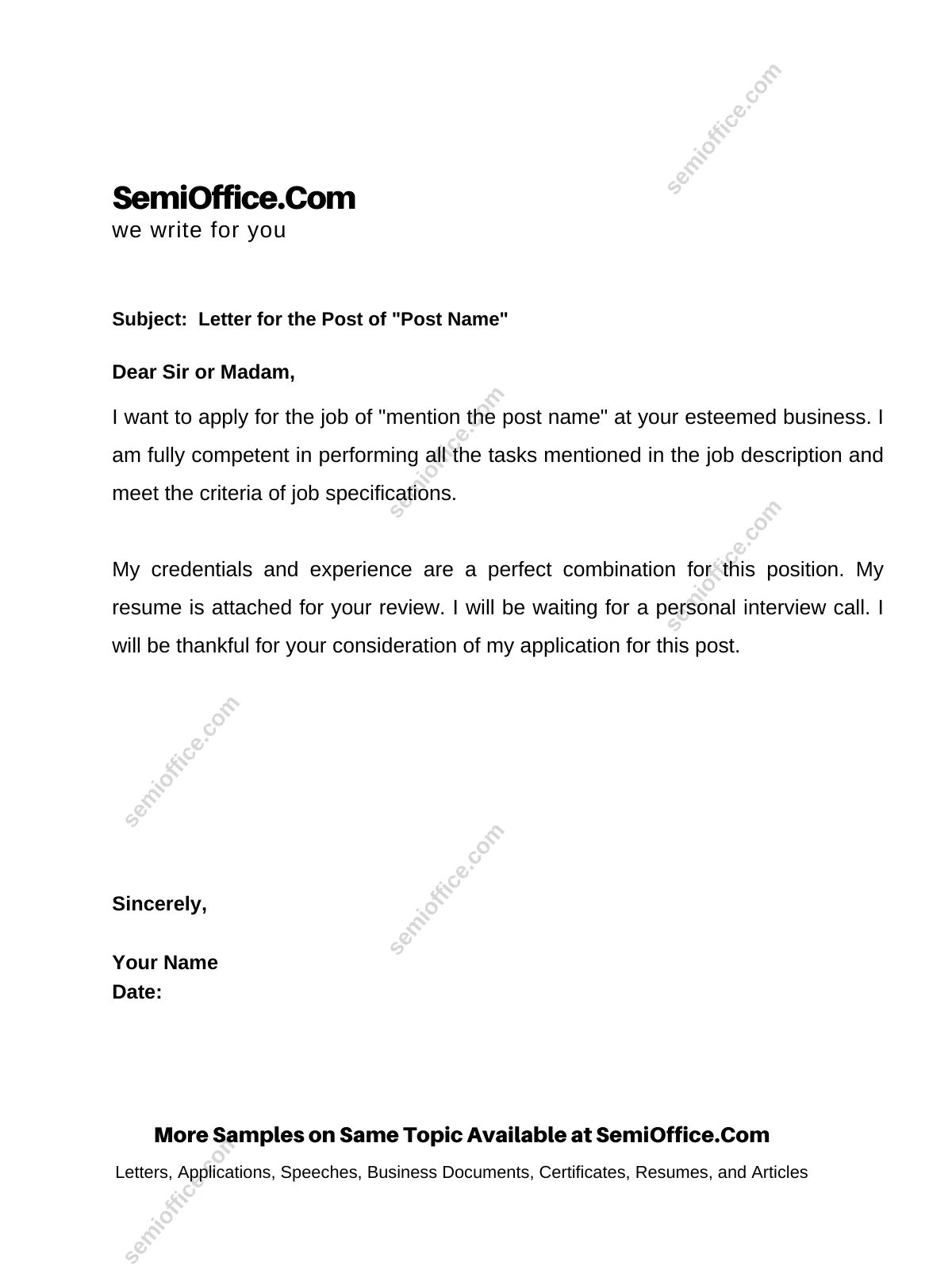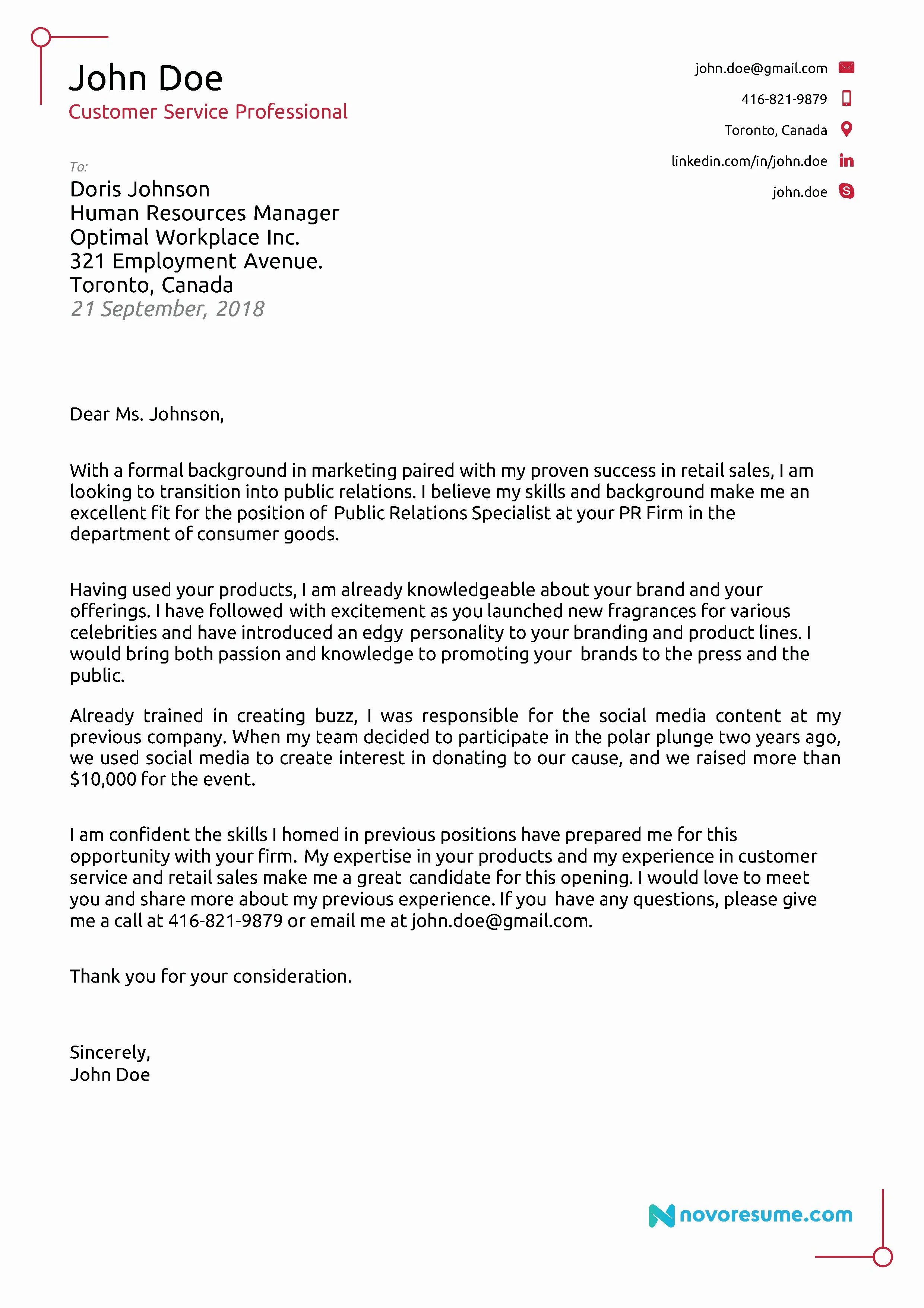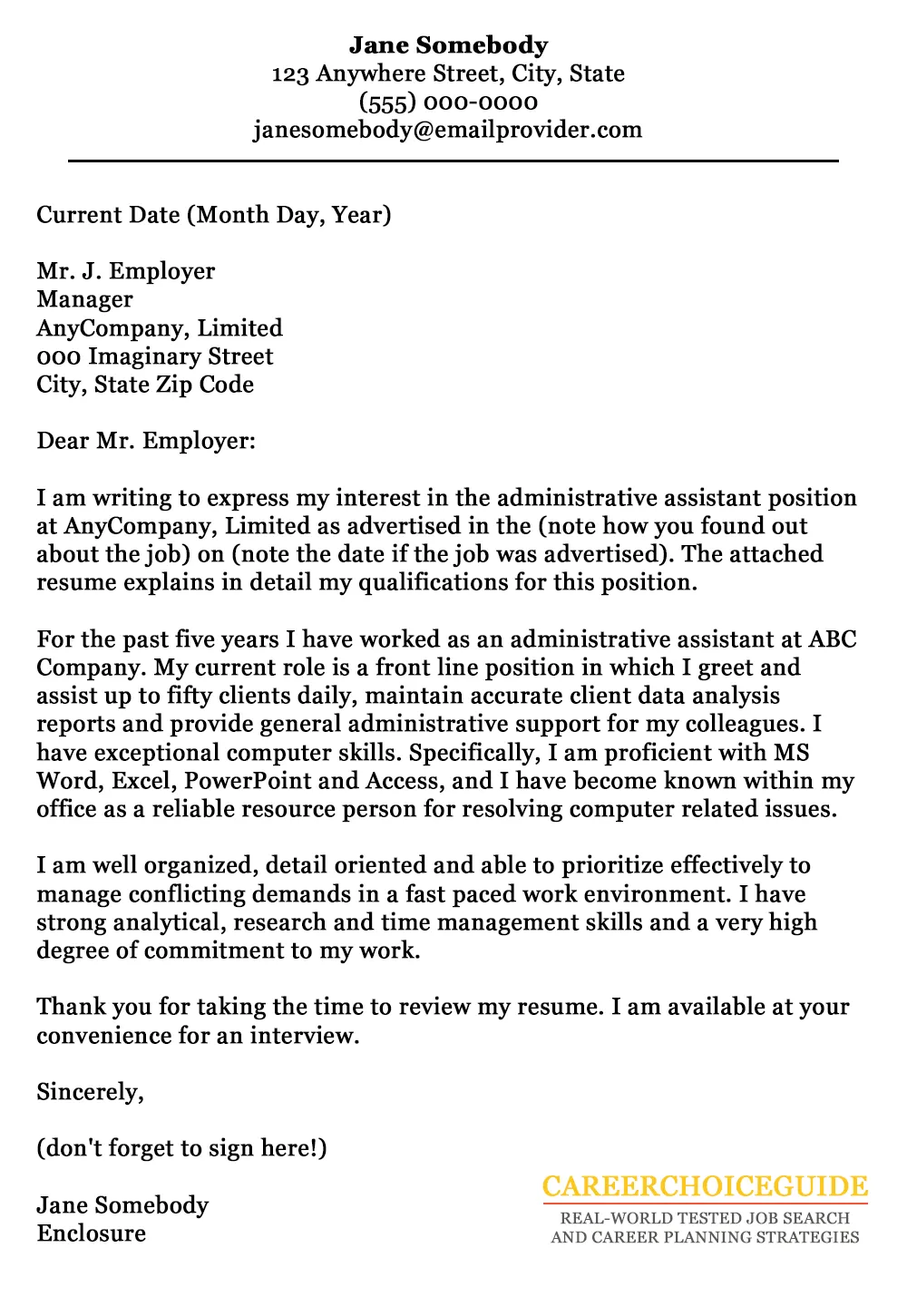Understanding the Importance of a Cover Letter
In the competitive landscape of job applications, a well-crafted cover letter can be the critical factor that sets you apart from other candidates. It serves as your first introduction to a potential employer, offering a unique opportunity to showcase your personality, skills, and enthusiasm for the role. Unlike your resume, which provides a factual account of your experience and qualifications, your cover letter allows you to narrate your career journey, explain your motivations, and demonstrate how your expertise aligns with the specific requirements of the job. A strong cover letter not only highlights your professional capabilities but also reflects your communication skills, attention to detail, and genuine interest in the company and the position. It’s a vital tool to persuade the hiring manager that you are not just qualified but also a perfect fit for their team.
Key Components of a Cover Letter
A comprehensive cover letter includes several essential components designed to create a lasting impression. The contact information section is your starting point, providing the hiring manager with the means to reach you. The salutation, though seemingly simple, sets the tone for your entire letter, and choosing the right one demonstrates professionalism. The opening paragraph should immediately capture the reader’s attention by stating the position you’re applying for and briefly mentioning where you found the job posting. The body of the letter is the core of your narrative, where you connect your skills and experiences to the job requirements, using specific examples and quantifiable achievements to support your claims. Finally, the closing paragraph should reaffirm your interest, express gratitude, and include a clear call to action, inviting the reader to review your resume and consider you for an interview. Each part of this framework plays a critical role in conveying your value and increasing your chances of securing an interview.
Contact Information and Date

Begin your cover letter with your contact information at the top, typically on the left-hand side. Include your full name, address, phone number, and email address. This ensures that the hiring manager can easily contact you. Following your contact information, include the date, formatted correctly (e.g., Month Day, Year). Directly below the date, include the hiring manager’s name and title, if known, and the company’s address. If you can’t find the hiring manager’s name, research on LinkedIn or the company website; otherwise, use a general title like ‘Hiring Manager’.
The Perfect Salutation
The salutation is the greeting of your cover letter, and it sets the tone for your entire message. If you know the hiring manager’s name, use it. ‘Dear Mr./Ms./Mx. [Last Name]’ is always a professional choice. Avoid outdated or overly casual greetings. If you can’t find a specific name, options include ‘Dear Hiring Manager’ or ‘Dear [Department Name] Hiring Team.’ Steer clear of generic greetings like ‘To Whom It May Concern,’ which can make your letter feel impersonal. The salutation should reflect the level of professionalism and respect you have for the recipient and the opportunity.
Crafting a Compelling Opening Paragraph
The opening paragraph is your first chance to grab the hiring manager’s attention, so make it count. Start by clearly stating the position you’re applying for and where you saw the job posting. Briefly mention why you’re interested in the role and the company. Consider including a strong, concise statement that reflects your enthusiasm and unique value proposition. This could be a brief summary of your most relevant skills or a compelling anecdote that illustrates your passion for the field. The goal is to immediately capture the reader’s interest and encourage them to read the rest of your letter. Remember to keep it focused, relevant, and tailored to the specific job.
Highlighting Your Skills and Experience

The body of your cover letter is where you demonstrate your qualifications. This section should highlight the skills and experiences that align with the job requirements. Carefully review the job description and identify the key skills and qualifications the employer is seeking. Provide specific examples from your past experiences that showcase these skills, using the STAR method (Situation, Task, Action, Result) to provide context and demonstrate the impact of your contributions. Quantify your achievements whenever possible to show the tangible results you delivered (e.g., increased sales by 15%, reduced costs by 10%). Tailor your examples to match the specific responsibilities outlined in the job description, proving you’re a perfect fit.
Tailoring Your Letter to the Job
One size does not fit all in cover letters. Customization is key to demonstrating your genuine interest and suitability for a specific role. Research the company thoroughly. Understand their mission, values, and recent achievements. Use this information to tailor your cover letter, showing how your skills and experiences align with their goals. Avoid using a generic cover letter; instead, address the specific requirements of each job. Highlight the skills and experiences that are most relevant to the position. Show the hiring manager that you understand the company and the role by including specific examples of how you can contribute to their success. This personal touch increases your chances of getting noticed.
Using Action Verbs to Showcase Accomplishments
Action verbs are powerful tools that make your cover letter more engaging and impactful. They bring your accomplishments to life, demonstrating your capabilities in a dynamic way. Start each sentence with a strong action verb to describe what you’ve done. Examples include ‘Managed,’ ‘Developed,’ ‘Implemented,’ ‘Achieved,’ ‘Led,’ ‘Improved,’ and ‘Collaborated.’ Instead of saying ‘Responsible for customer service,’ write ‘Managed customer inquiries and resolved issues, improving customer satisfaction by 20%.’ Using action verbs showcases your proactivity and provides concrete examples of your skills. Review your letter and replace passive verbs with active ones to give your letter more strength and precision.
Expressing Your Enthusiasm and Interest

Show the hiring manager that you are genuinely enthusiastic about the opportunity. Expressing your interest goes beyond simply stating that you want the job; it involves demonstrating your knowledge of the company, the industry, and the role. Mention what specifically attracts you to the company and the position. Explain how your personal and professional goals align with the company’s mission. This could involve discussing a project, a value, or an initiative of the company that resonates with you. Your enthusiasm should shine through, making it clear that you are not just looking for a job but are passionate about contributing to the company’s success. This enthusiasm will make you memorable.
Closing Your Letter Professionally
The closing paragraph is your final chance to leave a lasting impression. Reiterate your interest in the position and thank the hiring manager for their time and consideration. Include a clear call to action, such as inviting them to review your resume or suggesting a follow-up conversation. Use a professional closing such as ‘Sincerely,’ ‘Best regards,’ or ‘Respectfully.’ Ensure that your closing matches the tone of your letter and reflects the level of formality appropriate for the company. Proofread the entire letter one last time to catch any errors. A strong, professional closing ensures you leave a positive final impression.
Proofreading and Editing Your Cover Letter
Before submitting your cover letter, it’s essential to proofread and edit it meticulously. Spelling errors, grammatical mistakes, and typos can significantly detract from your professionalism and may lead to your application being rejected. Read your letter aloud to catch any awkward phrasing or sentences that don’t flow well. Use a grammar and spell-checking tool, but don’t rely on it entirely; it’s essential to review the content yourself. Have a friend or colleague review your letter as a fresh set of eyes can often spot errors you may have missed. Ensure that the formatting is consistent and easy to read. A polished, error-free cover letter reflects your attention to detail and commitment to excellence, significantly increasing your chances of getting noticed.
Cover Letter Best Practices

Several best practices can significantly enhance your cover letter. Keep your letter concise and focused; aim for one page. Use a professional font such as Times New Roman, Arial, or Calibri. Use clear and concise language, avoiding jargon or overly complex sentence structures. Tailor your letter to each job application. Customize the content to match the specific requirements and company culture. Use keywords from the job description to show the hiring manager that you understand the role. Maintain a positive and enthusiastic tone. Avoid negativity or complaining. Proofread thoroughly to eliminate errors. Follow all instructions provided in the job posting. By following these best practices, you increase your chances of making a great first impression and moving forward in the hiring process.
Formatting for Success
Formatting plays a crucial role in how your cover letter is perceived. Choose a standard, easily readable font (e.g., Times New Roman, Arial, or Calibri) with a size between 10 and 12 points. Use one-inch margins on all sides to create white space, making the letter more readable. Align your text to the left, avoiding full justification. Use single spacing within paragraphs and double spacing between paragraphs. Be consistent with your formatting throughout the letter. Use bolding or italics sparingly, primarily for emphasis. Ensure your letter is easy to read and visually appealing. This shows attention to detail and respect for the reader’s time. A well-formatted cover letter presents you as a professional and organized candidate.
Avoiding Common Mistakes
Several common mistakes can undermine your cover letter. Avoid generic or impersonal greetings; always address the hiring manager by name, if possible. Do not rehash your resume; instead, use your cover letter to expand on key experiences and highlight your skills. Be concise, and avoid unnecessary details that detract from your key message. Don’t use overly casual or informal language. Steer clear of clichés and overly enthusiastic statements. Proofread carefully to eliminate typos and grammatical errors. Avoid negative language or criticizing previous employers. Sending a cover letter with these common mistakes can hurt your chances of landing an interview. Always present a professional, polished, and tailored application to make the best impression.
Cover Letter Examples and Templates

Utilizing cover letter examples and templates can be a valuable resource during your job search. Online templates provide a pre-formatted structure that guides you through the writing process. However, remember to customize these templates to align with your unique skills, experience, and the specific job requirements. Examples from your field can show you how to structure your letter and use appropriate language and tone. When using a template or example, adapt the content to showcase your individual qualifications and experiences. Don’t simply copy and paste; instead, make the letter your own by injecting your personality and highlighting your key achievements. Tailoring a template enhances your chances of catching the hiring manager’s attention.
Cover Letter for Different Industries
The approach to writing a cover letter varies depending on the industry. Research the expectations and norms of the specific field you are targeting. Some industries, such as creative fields, may allow for a more innovative and personalized approach, while others, such as finance or legal, may require a more formal and structured tone. Adapt the language, tone, and content of your cover letter to match the industry’s standards. For example, in technology, you may highlight your technical skills and projects, whereas in marketing, you may emphasize your creativity and campaign successes. Tailoring your letter to the industry standards shows you are familiar with the field, its language, and its priorities.
Cover Letter for Entry-Level Positions
When applying for entry-level positions, focus on showcasing your potential, transferable skills, and relevant experiences. Highlight any internships, volunteer work, or projects you’ve completed. Demonstrate your enthusiasm for the field and your willingness to learn. Since you may have limited work experience, emphasize your education, extracurricular activities, and any skills you’ve developed through them. Provide examples that demonstrate your soft skills (e.g., communication, teamwork, problem-solving) which are highly valued by employers. Tailor the cover letter to show your understanding of the company and the role. By highlighting your eagerness, skills, and eagerness to learn, you increase your chances of making a great first impression.
Cover Letter for Mid-Career Professionals

Mid-career professionals should focus on highlighting significant achievements and providing specific examples of their past successes in their cover letters. Use quantifiable results to demonstrate the value you have brought to previous roles. Emphasize leadership experience, project management skills, and relevant technical expertise. Tailor your letter to showcase your adaptability and strategic thinking. Use a narrative style that connects your past experience to the role’s requirements. Demonstrate your knowledge of the industry and the challenges the company faces. Highlight your proven ability to deliver results and your value to the organization. You should showcase your expertise to demonstrate your ability to contribute to the company’s success.
Cover Letter for Executives
For executive-level positions, your cover letter should be a compelling executive summary of your career highlights. Focus on your strategic vision, leadership capabilities, and proven ability to drive organizational success. Quantify your achievements, emphasizing key metrics such as revenue growth, cost savings, and market share gains. Highlight your experience in leading teams, developing strategic plans, and managing key stakeholders. Tailor your cover letter to demonstrate your alignment with the company’s goals and values, and highlight your understanding of the industry challenges. Your cover letter should convey your high-level perspective, your capacity to lead, and your proven track record of success. Demonstrate how you can make a significant impact on the company.
The Impact of a Strong Cover Letter
A well-crafted cover letter can significantly impact your job search success. It provides an opportunity to make a compelling first impression, showcase your personality, and demonstrate your unique value proposition. A strong cover letter grabs the hiring manager’s attention, increasing your chances of being noticed and considered. It also clarifies your motivations and reinforces your qualifications, which can influence the hiring decision. The impact of a strong cover letter extends beyond just getting an interview. It sets the stage for the entire hiring process, demonstrating your professionalism and ensuring that you are remembered. Invest time and effort in creating a cover letter that stands out, and you’ll see a positive impact on your job search results.
